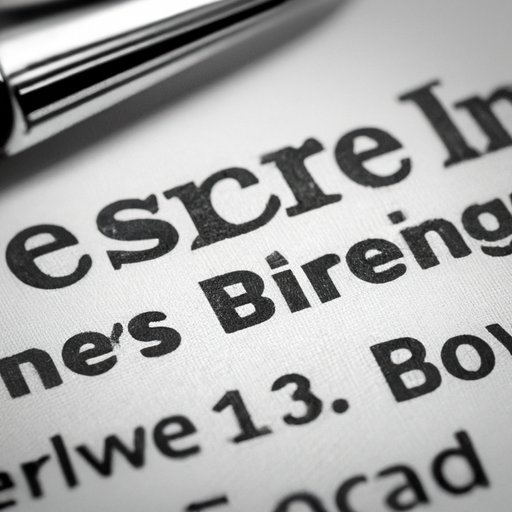
Introduction
As an entrepreneur, one of the critical elements of operating your business legally is obtaining a business license. Yet, what does a business license look like? It is essential to know not only what licenses you require to operate in your industry but also how to identify and read your license properly. In this article, we will help you understand everything about a business license, including its appearance, identification, and structure.
Understanding a Business License
A business license is a legal document that permits you to operate a business legally within a specific jurisdiction. The license is issued by government agencies at the local, state, or federal level, depending on the type of business and its location.
Business licenses are essential to ensure that companies operate according to local laws, regulations, and rules set by the government. They also help the government track the number of businesses operating within its jurisdiction and collect taxes related to business activity.
How to Identify a Business License
Typically, a business license is a well-crafted paper document with several unique features that make it easy to identify. Business licenses can vary in appearance depending on the issuing authority, but they often share common features.
The typical appearance of a business license includes a government seal, the business name, the license type, the date of issue, and the expiration date. The document may also contain additional information, such as license numbers, business owner and operator details, and industry specifics.
Different types of businesses require different types of licenses, and these licenses may differ in appearance. For example, specific regulations govern the sale of alcohol, tobacco, or firearms, and their respective licenses tend to require more detailed information and security features.
The Importance of Understanding the Appearance of Your Business License
As an entrepreneur, it is crucial to understand the appearance of a business license and how to identify it. Failing to obtain the correct license, or displaying the license improperly, can result in legal consequences, including fines, suspension of business operations, or even legal action.
Having a clear understanding of what your business license looks like can also help to avoid fraud. Business owners that understand their business license can identify when someone presents a fake license.
A Visual Guide to Interpreting and Reading Your Business License
Business licenses are essential documents for entrepreneurs; thus, it’s essential to understand their sections and components. Here is a visual guide to help you interpret and understand each component better:
Government Seal
A business license will typically feature a government seal or sign printed in color or gold that varies between local or state governments.
License Type
The license type lets the business owner know what the permit allows the business to do. For example, the license could be for operating a food establishment or selling retail goods.
Business Name and Address
The document identifies the business for which it was issued and the owner’s address and contact information.
Expiration Date
The expiration date is an essential element of the license. It tells the business owner or operator when the license must be renewed, preventing fines for late renewals or operating with an expired license.
Common Features Found on Business Licenses and What They Mean
Business licenses include various information that is specific to the business and the operation it represents. Here are some of the common features found on business licenses and what they mean:
Business Owner Information
The business owner information found on a license includes the name, address, and contact details of the owner of the business.
Business Location
The business location is a critical piece of information that the license must have. It specifies the address and location of the business that it is issued for.
License Number
Business licenses come with a license number, which is unique to each business. It is used to track and classify each business within the jurisdiction.
Fee Amount and Payment Date
The license includes information about the fee required for the license and the date by which the fee must be paid to operate the business legally.
Demystifying the Elements and Structure of a Business License
Most business licenses consist of several sections, each with critical information about the business it’s assigned to. Here are some of the essential sections of a business license.
The Business Name and Business Type
The first section of a business license will typically display the business name and the type of business. This is where the issuing agency specifies the specific business classification.
License Classification: Standard or Special
This section determines whether the business is classified as standard or special. Special classifications require more detailed information, as they are specific to unique business operations such as catering, fireworks sales, or liquor sales.
The Business Owner Information
The information on a business owner’s license generally consists of the owner’s name, address, and contact information.
Expiration Date & Renewal Details
The license will include an expiration date and renewal information that outlines the terms for license renewals.
Conclusion
Operating a business legally requires obtaining proper licensing. Understanding what a business license looks like and the legal requirements for obtaining and displaying it properly are essential steps for entrepreneurs. Make sure you obtain all of the necessary licenses for your business, and keep them up to date. If you are ever unsure, contact your local government offices for additional guidance.





